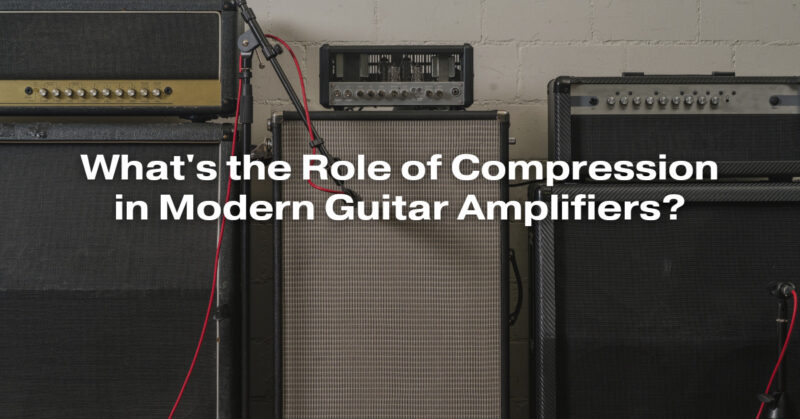Compression plays a significant role in modern guitar amplifiers, helping to shape the overall tone and dynamics of your guitar sound. It’s an essential tool for both live performance and studio recording. Here’s a breakdown of the role of compression in modern guitar amplifiers:
1. Dynamic Control:
- Compression in guitar amplifiers acts as a dynamic control tool. It helps to even out the volume and sustain of your guitar playing by reducing the dynamic range. This means that quieter notes or strums are brought up in volume, while excessively loud peaks are tamed.
2. Sustain Enhancement:
- Compression can increase sustain, allowing notes to ring out longer and smoother. This is especially useful for lead guitarists who want their notes to sing and sustain, giving them a singing quality often associated with iconic guitar solos.
3. Tone Shaping:
- Compression can subtly shape your guitar’s tone by emphasizing or de-emphasizing certain frequencies. It can make your guitar sound punchier, rounder, or brighter, depending on how it’s set.
4. Noise Reduction:
- Compression can help reduce noise in your guitar signal, particularly unwanted background noise or string noise. By making the quieter parts of your playing louder, it effectively reduces the signal-to-noise ratio.
5. Consistency in Live Settings:
- In live performances, compression can ensure a consistent guitar sound regardless of how hard or softly you play. This is particularly valuable when moving between rhythm and lead parts or when playing different guitars with varying output levels.
6. Emulation of Vintage Tones:
- Some guitarists use compression to emulate the characteristics of vintage amplifiers or recording equipment. It can add warmth and a touch of nostalgia to your sound.
7. Pedalboard Versatility:
- Many guitarists use dedicated compressor pedals before their amplifier to have more control over compression settings. This allows them to switch compressors easily and fine-tune the effect to suit different songs or playing styles.
8. In Amp or Amp Modeling:
- Some modern guitar amplifiers and amp modelers come with built-in compression options that can be dialed in to achieve specific tonal goals. These integrated compressors can be part of the amp’s effects section.
9. Studio Recording Tool:
- Compression is a vital tool in the studio for guitar recording. It helps to control dynamics, smooth out performances, and achieve the desired guitar tone. Engineers often use both amp compression and outboard compressors during the recording process.
It’s important to note that the role and impact of compression can vary depending on how it’s set and the specific compressor you’re using. Subtle compression can enhance your tone and make your playing more polished, while heavy compression can result in a more squashed and less dynamic sound. Experimenting with compression settings and understanding how it interacts with your playing style is key to harnessing its power effectively in your guitar tone.


